Last month, Tokyo architect Riken Yamamoto became the 53rd laureate of the Pritzker Architecture Prize. The ninth recipient from Japan, he launched his practice, Riken Yamamoto & Field Shop, in 1973. Since that time, he has built a wide range of works, from private residences to public-housing projects, museums, fire stations, schools, and entire university campuses. Yamamoto recently spoke with RECORD contributing editor Naomi Pollock, FAIA, about the importance of community as a social construct and as the driving force of his architectural design over five decades of practice.
Riken Yamamoto.
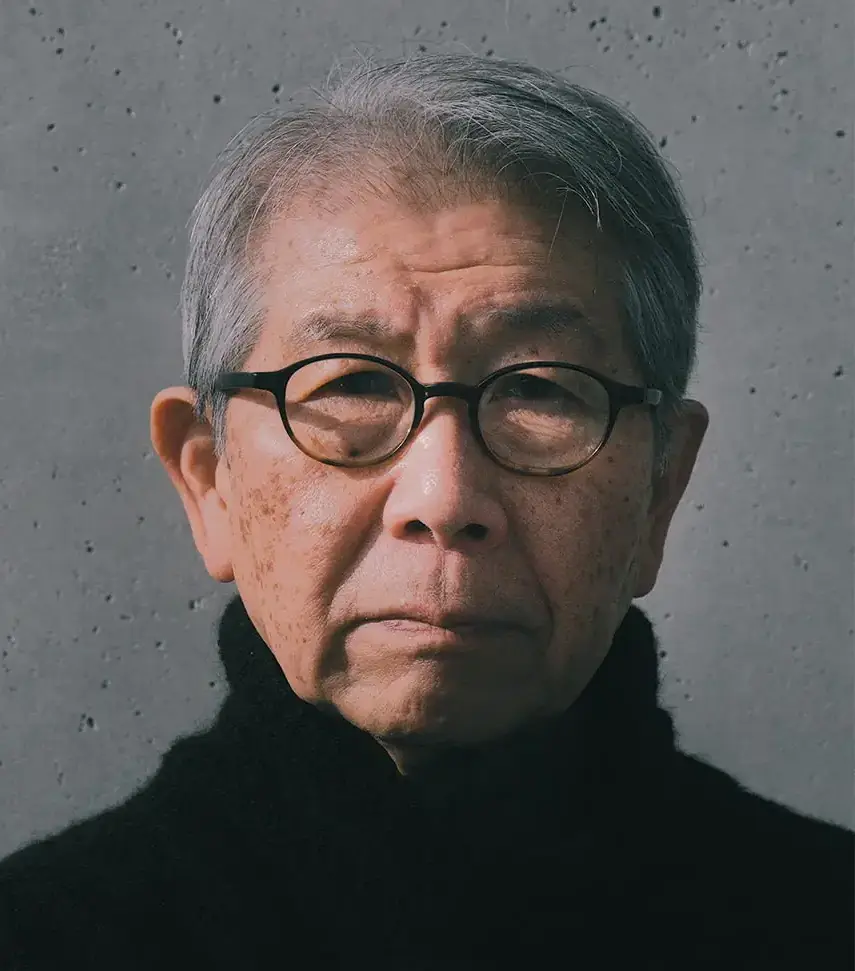
Photo © Tom Welsh, click to enlarge.
What does this award mean to you?
Since my work is very different from that of other architects, I thought the Pritzker Prize was out of reach. But they found me. I am really amazed.
How is your work different from other architects’?
As a master’s student at Tokyo University, I investigated villages around the world with my advisor, professor Hiroshi Hara. We traveled to many countries near the Mediterranean Sea as well as in Central America and South America. After that I went by myself to India, Nepal, and Iraq. These experiences had tremendous impact on me and gave form to the idea of community.
I was especially moved by a visit to Ghardaïa, in Algeria—one of five towns in the M’zab Valley in the Sahara Dessert. Each one occupies a small mountain covered by very narrow streets lined with houses, culminating in a minaret. This configuration revealed the meaning of communal living to me.
Whenever I think about architecture, I think about community. Any work of architecture is inside one. But it can be very difficult to find community in modern cities. My design goal is to make it visible. In that way, I am a little bit different from other architects.
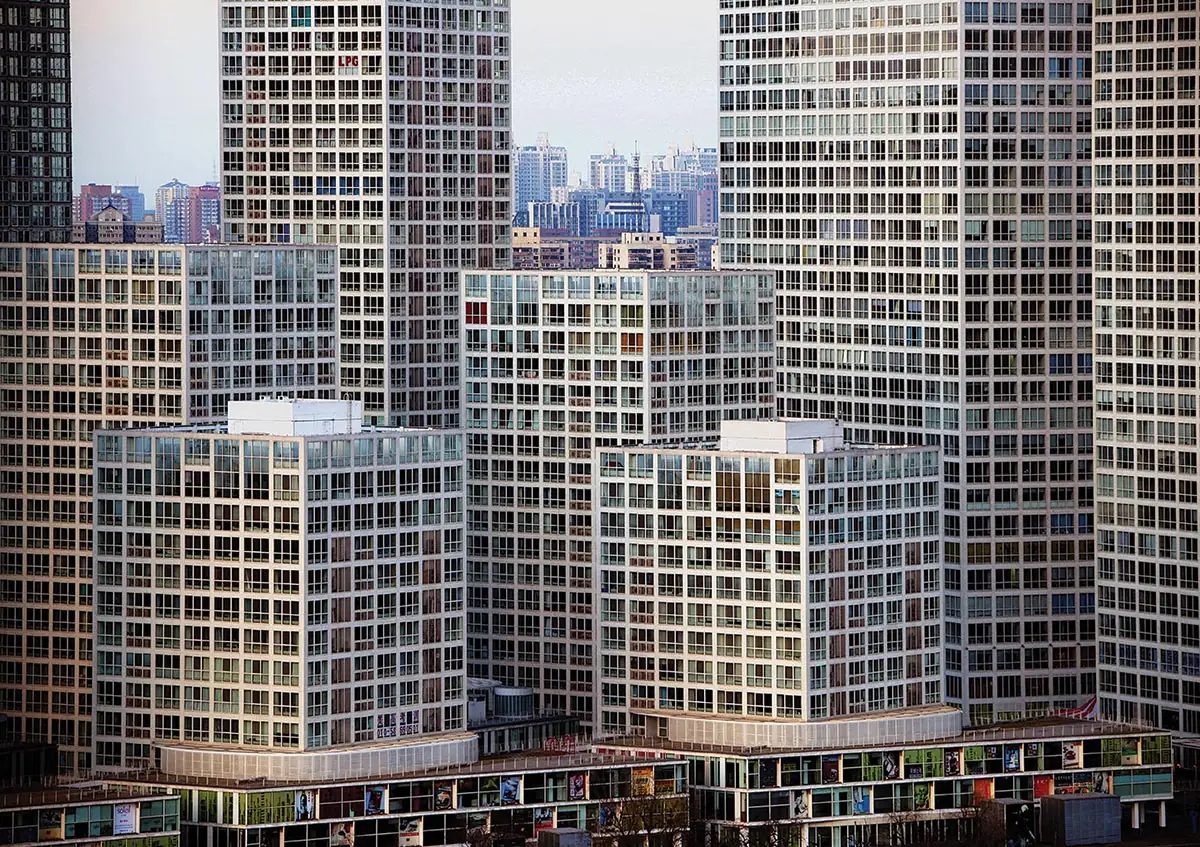
Jian Wai SOHO (2004), in Beijing, comprises nine residential towers. Photo © Riken Yamamoto & Field Shop
What was your first design project that featured this concept?
The Yamakawa Villa, a very small mountain house. The terrace, which has no exterior walls, is the main living space during the day. It is completely open, even to people outside the family. Here there is no meaning of “inside” and “outside.”
What are the components that define a strong community?
The most important thing is to make long-lasting architecture. Buildings should remain in a community for 100 or 200 years, so I choose durable materials with a long life span.
Your first communal residential project was Hotakubo Housing in Kumamoto Prefecture.
That’s right. The project consists of 110 private apartments surrounding a shared courtyard. There is no direct access to this space from outside the development—the only access is through the apartments. Each apartment is divided into two parts linked by a covered, but outdoor, bridge. Stairs connect one half to the road and the other to the courtyard.
At the time, I was criticized by journalists and residents who expected standard housing. But this project was part of Kumamoto Artpolis—a prefectural initiative started in 1988 to build inspired public works introduced by the then governor of Kumamoto Prefecture, Morihiro Hosokawa, under the aegis of architect Arata Isozaki. Mr. Hosokawa and Mr. Isozaki both defended me. Today, the situation is different—and very peaceful.
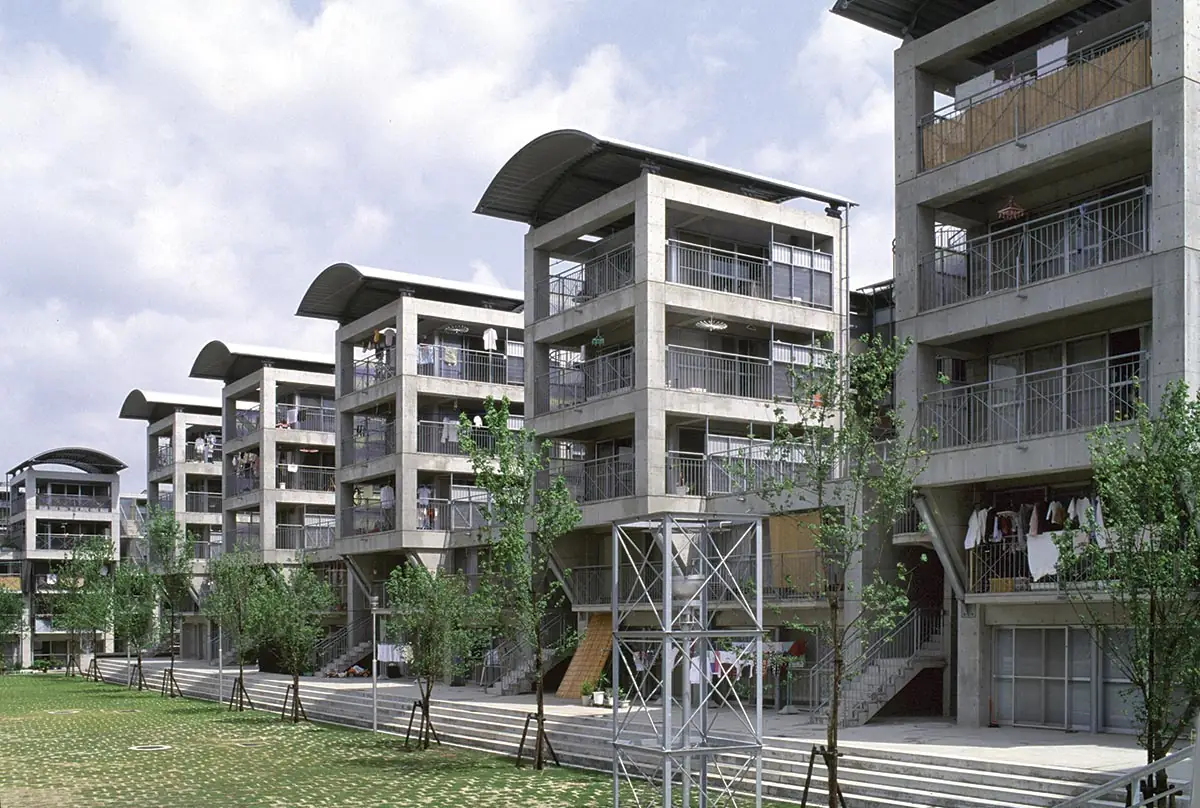
Hotakubo Housing (1991), Yamamoto’s first social-housing project, encompasses 16 clusters of residences. Photo © Tomio Ohashi
Is your design approach influenced by your background? Where did you grow up?
Originally, my neighborhood had a very narrow shopping street, about 5 meters [about 16½ feet] wide, lined with machiya houses that combined living spaces with shops. Our house was fronted by my mother’s pharmacy. People walking down the street and shopping at the stores developed social and economic connections to these homes and their owners.
Around 1955, the laws changed and the road was enlarged. Now it’s 25 meters [82 feet] wide. After that, customers stopped coming, most of the shops disappeared, and the historic machiya were replaced with small apartment buildings whose tenants worked elsewhere. It was no longer a place for pedestrians, for community; it became a thoroughfare for cars, so that relationship between buildings and the street disappeared. I want to replicate that urban atmosphere, where living space and workplace are combined.
What are you working on now?
The Taoyuan Museum of Art in Taiwan, which consists of two sloped buildings with a railroad and a highway in between—it is like a city gate. Covered by greenery, it blends building and landscape design. The project is expected to finish in 2026. The client wishes it wouldn’t take so long. But the Pritzker Prize will make them happy.
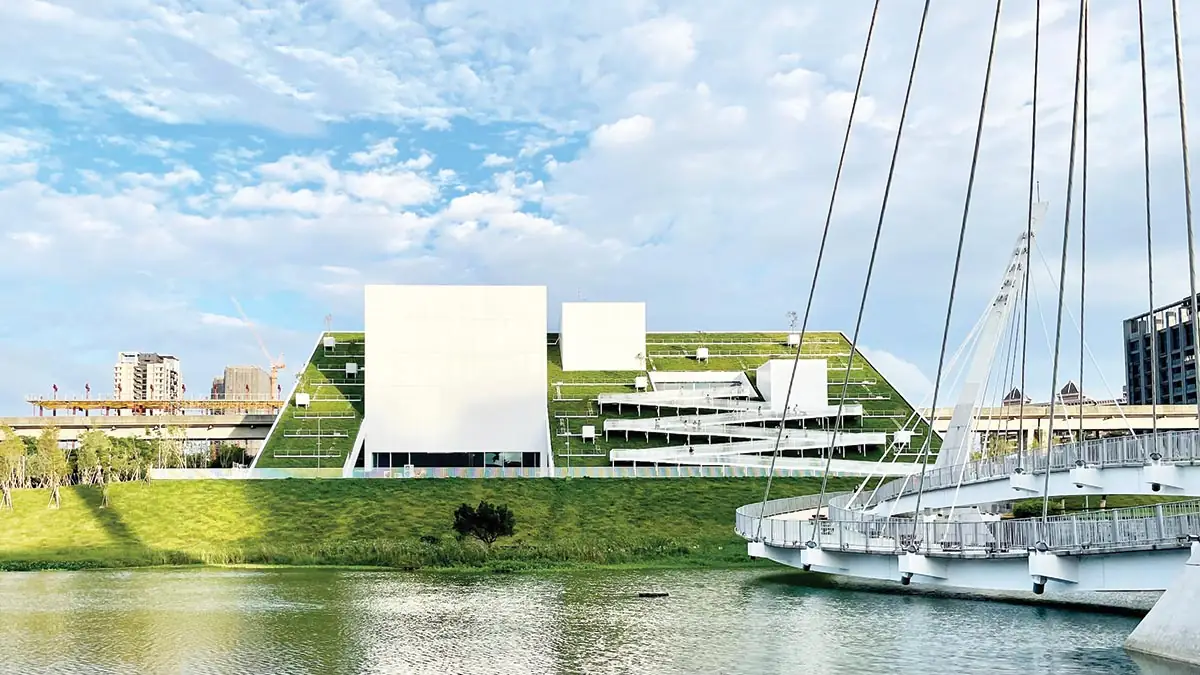
Work continues at the Taoyuan Museum of Art. Photo © Riken Yamamoto & Field Shop
What do you want to design in the future?
I’d like to create small communities of about 500 people. When the first Europeans immigrated to America, they made townships with a very new system. I think we can build new types of townships in Japan too.
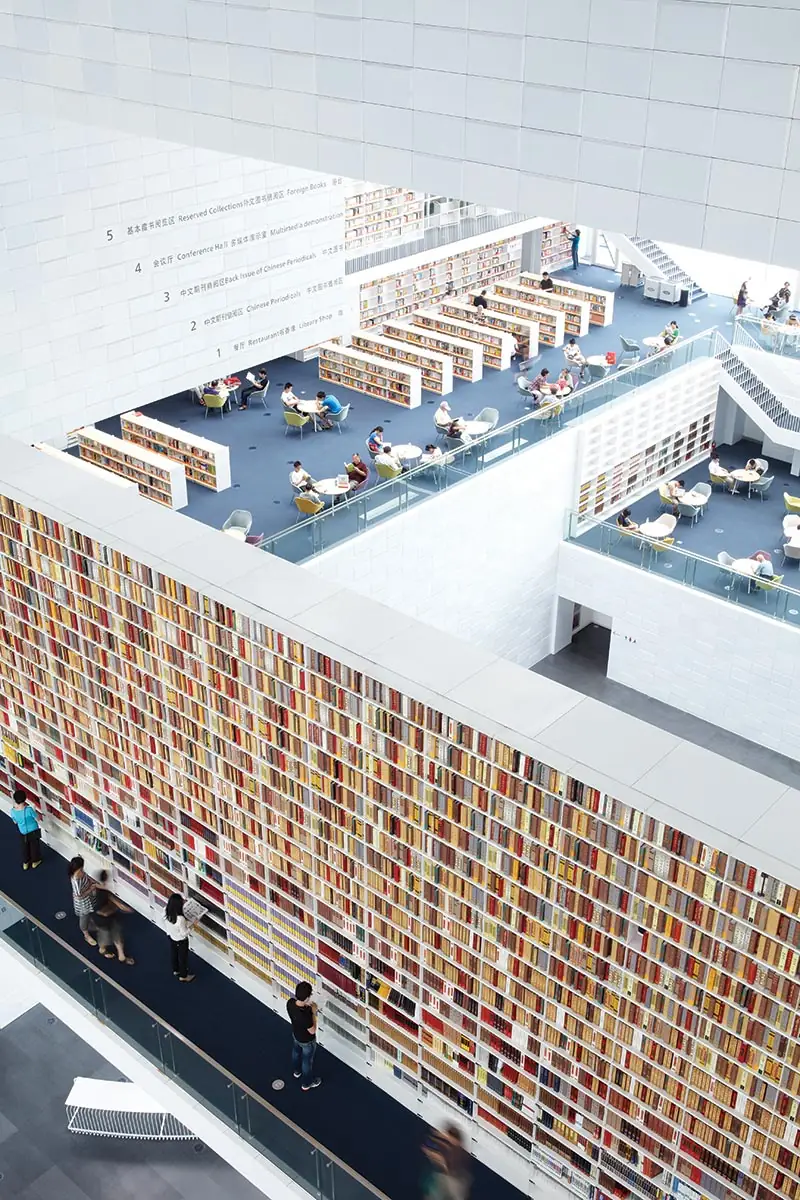
Tianjin Library (2012) holds 6 million books. Photo © Nacasa & Partners
I am now designing a small condominium building in Yokohama for 10 families and various shop owners, with a big multipurpose hall in the middle.
Also, at Hotakubo Housing, I am proposing that the local government turn the ground level into shops and restaurants open to the common space where vegetables could be planted and used by the chefs.
In your opinion, why have so many Japanese architects won the Pritzker Architecture Prize?
Architects in Japan face a tough challenge. Here, the power of conformity is very strong. Everyone wants to do things according to the norm, including many designers. But talented architects are trying to create architecture for communities that addresses the characteristics of a particular place. To do so, they must have a strong point of view. Pritzker Prize–winners in Japan, like Shigeru Ban and Toyo Ito, put forth bold ideas in opposition to the prevailing standards.


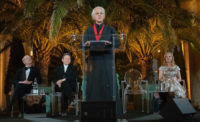
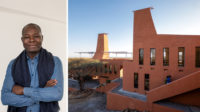

Post a comment to this article
Report Abusive Comment